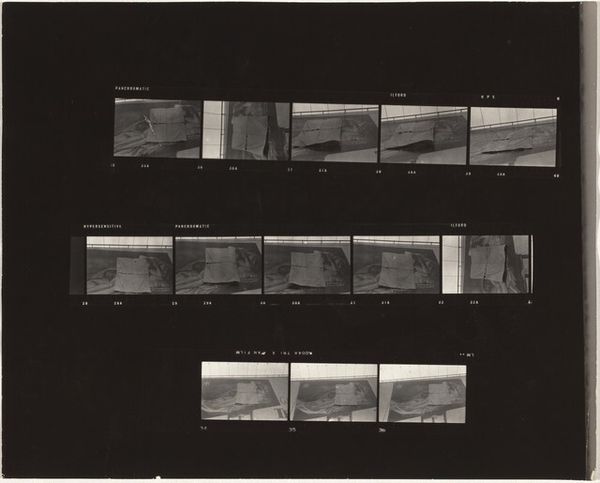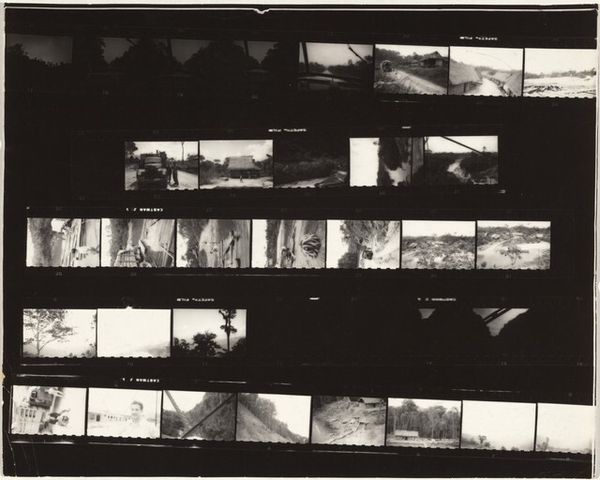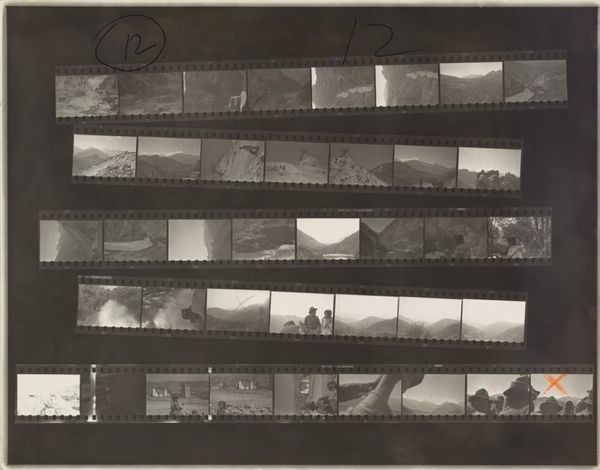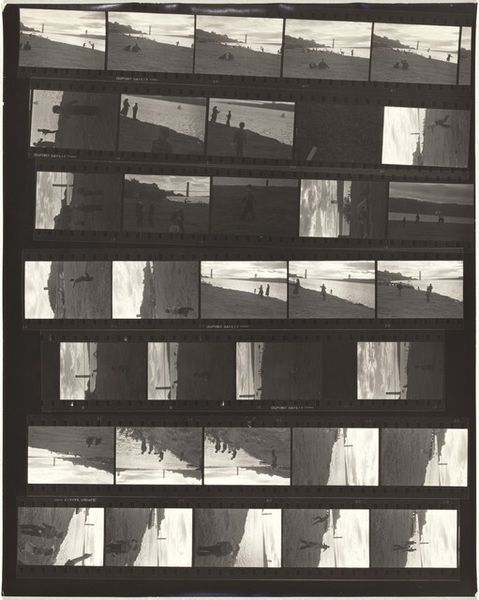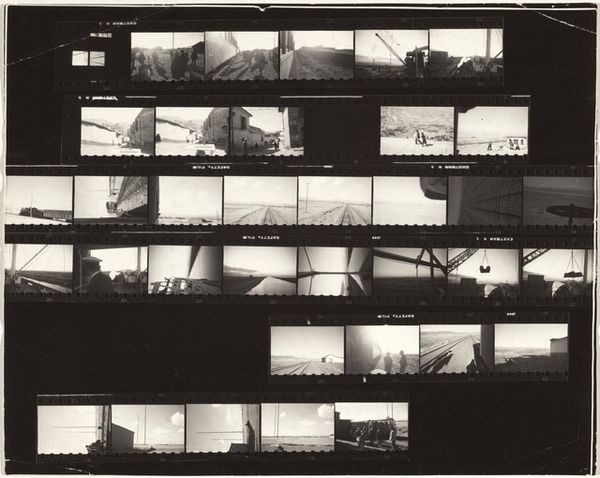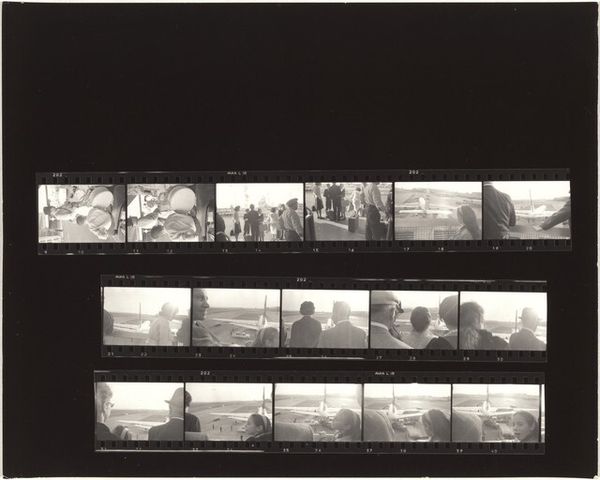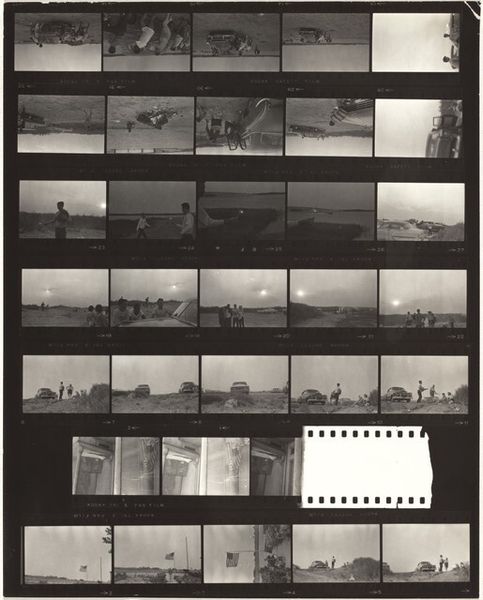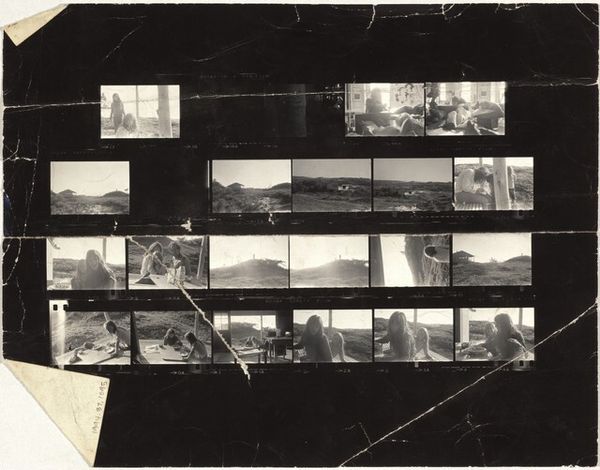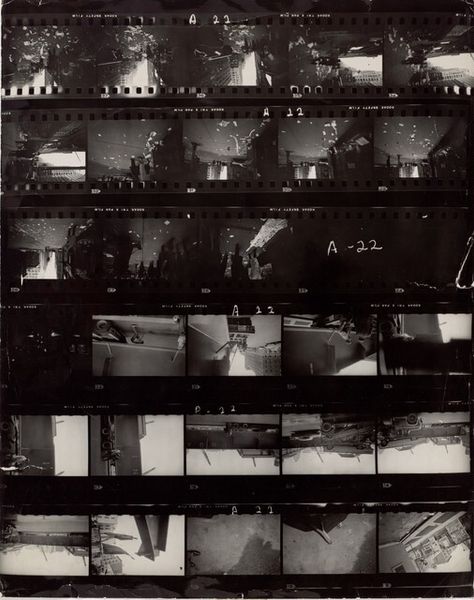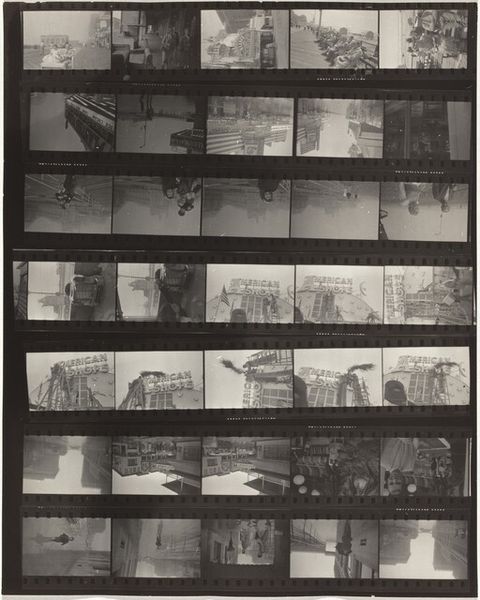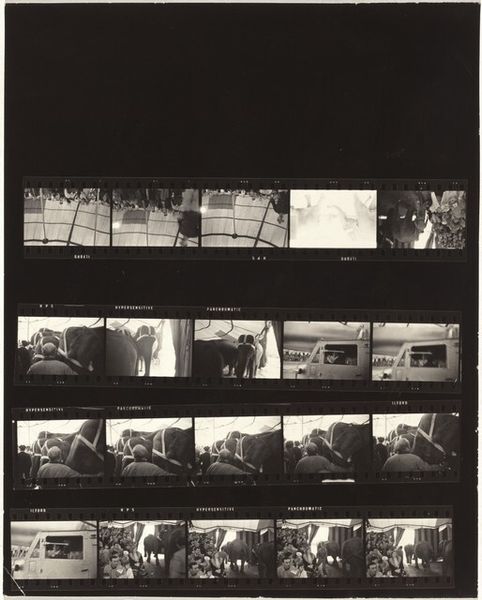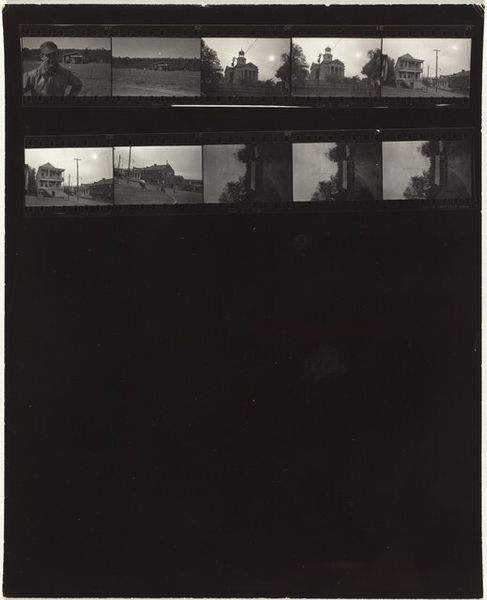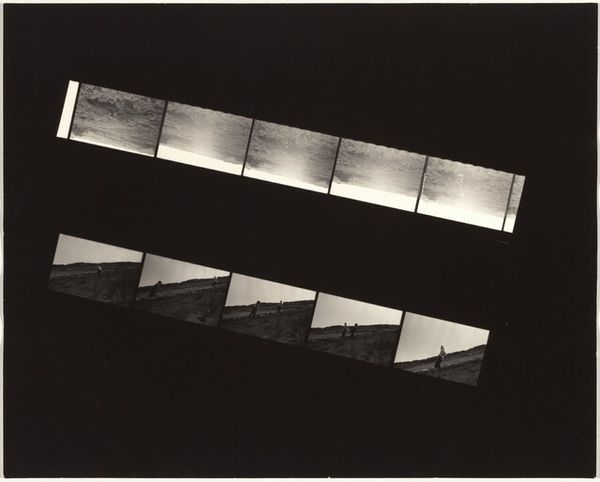
Francois Chouteau Bridge, Missouri River--Kansas City no number 1948
0:00
0:00
photography, gelatin-silver-print
#
print photography
#
landscape
#
photography
#
gelatin-silver-print
Dimensions: overall: 20.2 x 25.5 cm (7 15/16 x 10 1/16 in.)
Copyright: National Gallery of Art: CC0 1.0
Curator: Let’s discuss Robert Frank's “Francois Chouteau Bridge, Missouri River--Kansas City no number,” a gelatin-silver print from 1948. It's presented as a contact sheet, offering insight into the photographic process itself. Editor: The presentation as a contact sheet gives a behind-the-scenes look into Frank's working methodology; you get a good feel for his gaze. It feels fragmented and almost like a study. I'm immediately drawn to the textures of the steel bridge against the stark sky. Curator: Exactly! Frank's choices of material are interesting. The industrial materiality of the bridge reflects the post-war drive and optimism found throughout mid-century America, and using photography challenges traditional high-art mediums. The selection of the gelatin silver process emphasizes its reproducibility. It suggests a broader reach and availability, aligning the work with a more democratic distribution of images. Editor: Thinking historically, the mid-20th century saw photography gain greater institutional acceptance in museums and galleries. This period helped normalize photographic practices alongside established art forms like painting or sculpture. The location in Kansas City also indicates shifts in population towards developing urban centres during this era. Curator: Consider the socio-economic context, too: Frank documented the construction of infrastructure. He's commenting on human manipulation of the landscape for economic benefit. The contact sheet as an artistic choice underscores labor. We're not seeing the perfected end-product, but the iterative process—akin to viewing the artist at work, emphasizing labor in making. Editor: Seeing the raw proofs also invites the viewer to actively engage in constructing the narrative, making choices, selecting views... almost playing the curator ourselves, considering how public spaces become representations of civic life and aspiration. What final picture do we choose? What statement is ultimately put on display for public consumption and debate? Curator: Very insightful. He's really offering up the production to critique, prompting examination into consumer culture. I'd argue that its display prompts an assessment on production and viewership. Editor: Ultimately, its presence encourages thinking beyond the visual aesthetic by forcing engagement between place, progress and posterity, asking who benefits, what is displayed and for how long.
Comments
No comments
Be the first to comment and join the conversation on the ultimate creative platform.
